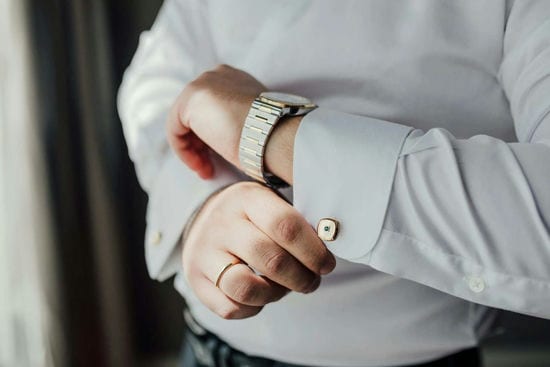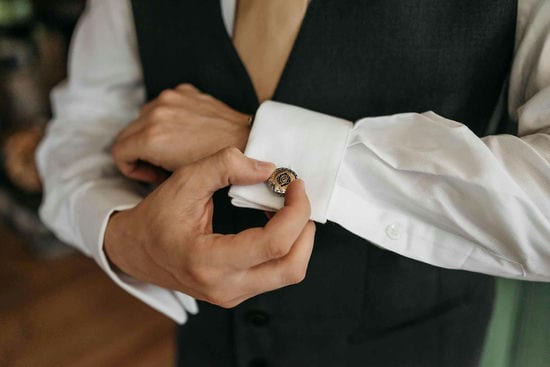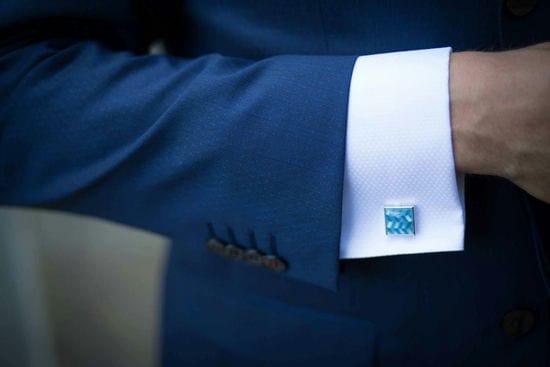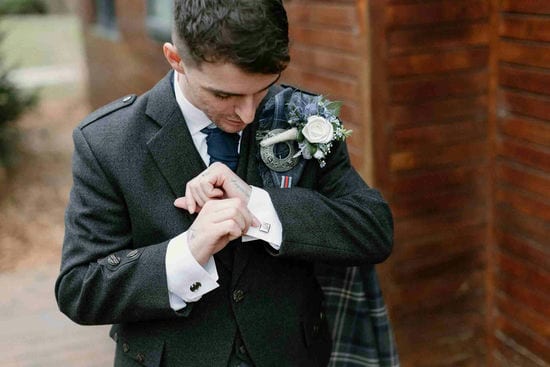Cufflinks are a quintessential accessory for any refined wardrobe, adding individuality to your ensemble. Understanding how to put on cuff links correctly can elevate your appearance, ensuring you exude elegance and confidence. This guide will walk you through the steps, offering tips and insights into wearing these timeless pieces with ease. Whether preparing for a formal event or enhancing your daily attire, cufflinks will set you apart with style and finesse.

Cufflinks are the epitome of understated elegance, small yet significant accessories designed to fasten the cuffs of a dress shirt. They come in various materials, including precious metals like gold and silver, and more affordable options like stainless steel and glass. Some cufflinks feature intricate designs or are adorned with precious stones, while others offer a sleek, minimalist look.
Historically, cufflinks date back to the 17th century, evolving from simple ribbons used to tie shirt cuffs to the sophisticated pieces we see today. They have long been associated with a sense of luxury and status, often worn by royalty and the elite. Today, cufflinks continue to be a symbol of refinement, suitable for both formal and semi-formal occasions.
But do you know how do cuff links work on the cuff? Cufflinks work by securing shirt cuffs, especially those with French or double cuffs without buttons. They consist of a decorative face connected to a post with a swivel or fixed back; the post passes through the buttonholes and is secured, with swivel backs locking in place and fixed backs pushing through to fasten.

Wearing cufflinks may seem daunting at first, but with a little practice, it becomes a straightforward task that significantly enhances your outfit. Here are 5 detailed steps about how to use cuff links with ease and elegance:
Step 1: Choose the Right Shirt
You may select a dress shirt with French or double cuffs, as these are specifically designed to be worn with cufflinks. These cuffs are longer and fold back on themselves, creating a double layer that requires a fastener. But if your dress shirt has only a single cuff, you should choose one with holes on both sides of the opening.
Step 2: Prepare the Cuffs
For single cuffs, you may align the holes on both sides of the cuff opening. For French cuffs, fold the cuff back so that the two edges align perfectly, creating a neat, double-layered cuff ready for the cufflinks. Ensure the cuff holes are aligned to make it easier to insert the cufflinks.
Step 3: Insert the Cufflink
Once you have prepared the cuff, you may hold the cufflink with the decorative face down. Then insert the post through the aligned holes from the outside of the cuff. The method of how to attach cuff links will depend on its type. Here are the uses of 4 common types:
Step 4: Fasten the Cuff
After you insert the cufflink, you can secure the sides of the cuff in two ways:
Kissing Style: The interior faces of the cuff touch one another, with the hemmed edges pointing outward.
Barrel Style: One edge of the cuff lays atop the other, creating a more streamlined, business-like look.
Step 5: Final Adjustments
Once all the cufflinks are in place, check whether they are securely fastened and aligned correctly. The decorative face of the cufflink should be positioned outward, visible on the outside of your wrist. You can adjust as needed to ensure the cufflink is snug but not too tight, allowing for comfortable movement.

Cufflinks come in a dazzling array of styles, each suited to different occasions and personal tastes. Here are 9 popular types that can help you choose the perfect pair for any occasion.
1.Whale Back Cufflinks: They are a classic choice, featuring a flat, tail-like backing that flips up to secure the post. Their simplicity and user-friendly design make them a popular option for everyday wear and formal occasions alike.
2.Swivel Bar Cufflinks: They have a post with a pivoting bar that locks into place. These are easy to use and secure, making them ideal for both beginners and seasoned wearers.
3.Bullet Back Cufflinks: Similar to whale tail cufflinks, they have a hollow frame post and a narrow metal cylinder closing mechanism. They offer a robust and sleek fastening mechanism for a polished look.
4.Stud or Button Style Cufflinks: They have a large head, a straight post, and a smaller interior head or backing. Unlike hinged cufflinks, they, smaller and more discreet, consist of a single piece without a hinge mechanism. Their smaller head is tilted, threaded through the buttonhole, and then straightened out to lock it in place.
5.Chain Link Cufflinks: They have a chain connecting the two decorative ends, offering a slightly looser fastening with visible decoration on both sides of the closed buttonholes. They are less rigid and provide a more relaxed appearance, suitable for everyday wear.
6.Knot Cufflinks: They resemble chain link type but are made of soft cord, typically silk, with decorative knots as the heads. They can add a playful accent to your outfit, ideal for less formal occasions.
7.Ball Return Cufflinks: They have a curved post with a ball at the end. They provide a secure yet slightly looser fastening compared to hinged cufflinks. While they can be more expensive in precious metals, their unique design adds a touch of luxury to any outfit.
8.Locking Dual-Action Cufflinks: As the easiest style to use, they have a hinge mechanism similar to metal watchband closures. The entire post serves as a hinge, allowing the cufflink to swing open for easy insertion. Once slipped through the opening, the cufflink is swung shut, clipping the sides of the cuff together underneath the head for a secure fit.
9.Fabric Cufflinks: They can feature almost any fastener style but have a fabric “button” on top as the ornamental face. This deliberately casual style adds a relaxed yet refined touch to your attire, perfect for less formal occasions where comfort is key.

Cufflinks are sophisticated accessories that add flair to formal and semi-formal attire. They're ideal for occasions where a polished look is required, such as weddings, white or black-tie events, and business meetings. When worn with suits or tuxedos paired with French cuff shirts, most types of cufflinks can complement your outfits.
On the other hand, when you join traditional events, wearing classic metal cufflinks and novelty cufflinks can inject personality into more casual gatherings. But please note that if you are not a hipster, avoid wearing cufflinks with casual outfits like jeans and T-shirts as they might appear out of place. If you were, just mix for your unique styles.
So, you can always don cufflinks whenever the mood strikes.
The perfect pair of cufflinks involves several factors to ensure they enhance your overall look. Here are some expert tips to guide your choice.
Cufflinks are more than mere accessories; they are a testament to a man's attention to detail and his appreciation for the finer aspects of fashion. By learning how to put on cuff links, when to use them, and how to choose them, you can seamlessly integrate this timeless accessory into your wardrobe to allow for endless possibilities of expression and style.
No, cufflinks are designed specifically for shirts with French cuffs, which feature longer cuffs that fold back and require cufflinks to secure them. Standard button-up shirts typically have button cuffs and cannot accommodate cufflinks.
Yes, cufflinks are specifically designed for French cuff shirts. This style allows cufflinks to be inserted and secures the cuff in place, providing a polished and sophisticated look.
Cufflinks have evolved from being a necessity to a statement accessory, making them far from outdated. While they may not be as commonly worn in casual settings, they remain a symbol of refinement and are frequently seen at formal events, business occasions, and in professional settings.
Which finger is the ring finger? This article will delve into the cultural traditions and customs behind it to explain its meaning of love and commitment.
Read MoreLearn how to clean moissanite jewelry effectively with our expert tips. Keep your moissanite sparkling with proper care and maintenance techniques.
Read MoreLearn how to clean rusted jewelry effectively. Discover what causes jewelry to rust and tips to prevent rust, ensuring your items stay pristine and beautiful.
Read MoreLearn how to make paper earrings with our step-by-step guide. Perfect for DIY jewelry enthusiasts, here is all you need to create beautiful paper earrings.
Read More